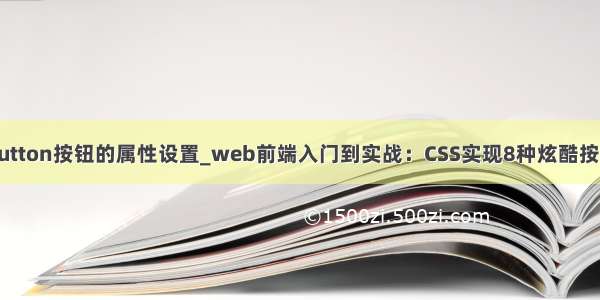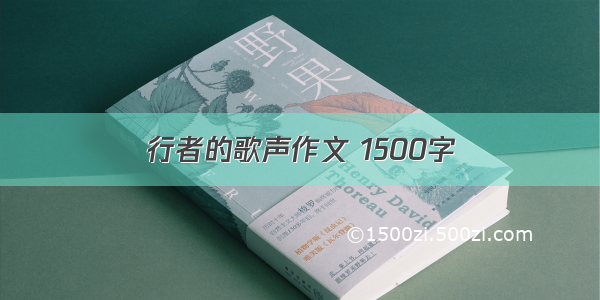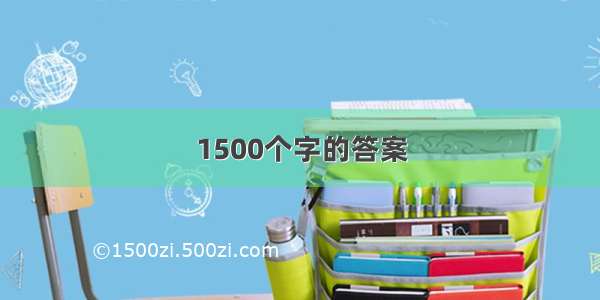
今天给大家分享8种炫酷按钮的CSS实现。
1. 3D按钮1
现在的主流是扁平化的设计,拟物化的设计比较少见了,所以我们仅从技术角度去分析如何实现这个3D按钮
该按钮的立体效果主要由按钮多出的左、下两个侧面衬托出来,我们可以使用box-shadow模拟出这两个侧面:
HTML:
<button class="button-3d-1">3D Button 1</button>
CSS:
.button-3d-1{position: relative;background: orangered;border: none;color: white;padding: 15px 24px;font-size: 1.4rem;outline: none;box-shadow: -6px 6px 0 hsl(16, 100%, 30%);}
效果:
加了box-shadow之后整体形状有点像了,但是立方体的左上和右下确缺了一块。通过观察我们发现,缺的这两块是三角形的,所以如果我们能构造两个三角形补到这两个角上就行了。用CSS画三角形对大家来说应该是基本操作了,如果还有同学不知道,下面的动画很好的解释了原理
我们使用::before和::after伪元素来分别绘制左上、右下的两个三角形,并通过绝对定位将它们固定到两个角落:
CSS:
.button-3d-1::before {content: "";display: block;width: 0;height: 0;position: absolute;top: 0;left: -6px;border: 6px solid transparent;border-right: 6px solid hsl(16, 100%, 30%);border-left-width: 0px;}.button-3d-1::after {content: "";display: block;width: 0;height: 0;position: absolute;bottom: -6px;right: 0;border: 6px solid transparent;border-top: 6px solid hsl(16, 100%, 30%);border-bottom-width: 0px;}
接下来,我们需要实现点击时按钮被按下的效果,思路是点击时将按钮正面向左下角移动,同时减少box-shadow的偏移量以达到按钮底部固定不动的效果:
CSS:
.button-3d-1:active {background: hsl(16, 100%, 40%);top: 3px;left: -3px;box-shadow: -3px 3px 0 hsl(16, 100%, 30%);}
最后,我们需要重新计算左上、右下两个三角形的尺寸和位置,以适应按下后上下缺口的变小:
CSS:
.button-3d-1:active::before {border: 3px solid transparent;border-right: 3px solid hsl(16, 100%, 30%);border-left-width: 0px;left: -3px;}.button-3d-1:active::after {border: 3px solid transparent;border-top: 3px solid hsl(16, 100%, 30%);border-bottom-width: 0px;bottom: -3px;}
2. 3D按钮2
对于这种圆柱形的按钮,思路和上面矩形3D的按钮类似,也是通过box-shadow构造侧面呈现立体感。为了使效果更加真实,侧面的颜色呈现渐变效果,越往下颜色越深,因此我们可以通过叠加多层box-shadow来实现:
HTML:
<button class="button-3d-2">Circle!</button>
CSS:
.button-3d-2{position: relative;background: #ecd300;background: radial-gradient(hsl(54, 100%, 50%), hsl(54, 100%, 40%));font-size: 1.4rem;text-shadow: 0 -1px 0 #c3af07;color: white;border: 1px solid hsl(54, 100%, 20%);border-radius: 100%;height: 120px;width: 120px;z-index: 4;outline: none;box-shadow: inset 0 1px 0 hsl(54, 100%, 50%),0 2px 0 hsl(54, 100%, 20%),0 3px 0 hsl(54, 100%, 18%),0 4px 0 hsl(54, 100%, 16%),0 5px 0 hsl(54, 100%, 14%),0 6px 0 hsl(54, 100%, 12%),0 7px 0 hsl(54, 100%, 10%),0 8px 0 hsl(54, 100%, 8%),0 9px 0 hsl(54, 100%, 6%);}
当点击按钮的时候,通过下移按钮和减少box-shadow的层数来实现按钮被按下的效果:
CSS:
.button-3d-2:active{...top: 2px;box-shadow: inset 0 1px 0 hsl(54, 100%, 50%),0 2px 0 hsl(54, 100%, 16%),0 3px 0 hsl(54, 100%, 14%),0 4px 0 hsl(54, 100%, 12%),0 5px 0 hsl(54, 100%, 10%),0 6px 0 hsl(54, 100%, 8%),0 7px 0 hsl(54, 100%, 6%);}
3. 渐变按钮1
提到渐变色大家一般都会想到background-image属性可以设置为linear-gradient以呈现渐变色的背景,事实上linear-gradient的类型属于<image>的一种,所以凡是可以使用图片的属性都可以用linear-gradient代替,包括border-image。实现这个按钮的关键在于实现一个渐变色和边框,而且当鼠标悬浮的时候边框和背景融为一体。
首先,我们实现渐变色的边框。
HTML:
<button class="gradient-button-1">Gradient Button 1</button>
CSS:
.gradient-button-1{position: relative;z-index: 1;display: inline-block;padding: 20px 40px;font-size: 1.4rem;box-sizing: border-box;background-color: #e7eef1;color: orangered;border:solid 10px transparent;border-image: linear-gradient(to top right, orangered, yellow);}
效果:
很奇怪,只有四个顶点有图像。这是因为border-image-slice默认为100%,所以导致四条边线上并没有分配背景图像。border-image-slice的用法参考 MDN,简而言之就是用四条(上下、左右各两条平行线,想象一下九宫格火锅。。)将图片切割成9块,在border的对应区域显示对应的图像切片,而border-image-slice的值就是那四条线的偏移量。这下大家应该能理解偏移量为100%的时候只有四个顶点上才有图片了吧。
所以我们需要调整border-image-slice的值,鉴于border-image-source为linear-gradient,我们需要将border-image-slice的值设置为1(表示四条线的偏移量都为1px)才能显示连续的渐变色背景:
CSS:
.gradient-button-1{...border-image-slice: 1;}
最后,我们只需要在鼠标悬浮的时候用渐变色填充按钮内部就行了,此处有两种实现,用background-image或者 将border-image-slice设置为fill(表示填充border中间的区域):
CSS:
.gradient-button-1:hover{color: white;background-image: linear-gradient(to top right, orangered, yellow);/* 或者 */border-image-slice: 1 fill;}
4. 渐变按钮2
与上一种按钮类似,只不过颜色是逐渐变透明,实现也类似:
HTML:
<button class="gradient-button-2">Gradient Button 2</button>
CSS:
.gradient-button-2{...border:solid 4px transparent;border-image: linear-gradient(to right, orangered, transparent);border-image-slice: 1;}.gradient-button-2:hover{color: white;background-image: linear-gradient(to right, orangered, transparent);border-right: none;}
注意点:当hover的时候需要设置border-right: none,否则右侧边框无法呈现消失的状态。5. 动画按钮1
给按钮加上一个动态背景的思路是:先找一个可以repeat的背景图,然后使用keyframe自定义一段动画,当鼠标悬浮在按钮上的时候运行该动画:
HTML:
<button class="animated-button-1">Animated Button 1</button>
CSS:
.animated-button-1{position: relative;display: inline-block;padding: 20px 40px;font-size: 1.4rem;background-color: #00b3b4;background-image: url("wave.png");background-size: 46px 26px;border: 1px solid #555;color: white;transition: all ease 0.3s;}.animated-button-1:hover{animation: waving 2s linear infinite;}@keyframes waving{from{background-position: 0 0;}to{background-position: 46px 0;}}
注意点:background-position水平方向的值需要等于背景图片的宽度或其整数倍,这样动画循环播放的时候首尾才能平稳过渡。6. 动画按钮2
该按钮的实现思路是:用::after伪元素创建右侧的箭头,使用绝对定位固定在按钮右侧,静止状态下通过设置opacity: 0隐藏,当鼠标悬浮时,增大按钮的padding-right,同时增加箭头的不透明度,并将其位置往左移动:
HTML:
<button class="animated-button-2">Animated Button 2</button>
CSS:
.animated-button-2{position: relative;padding: 20px 40px;font-size: 1.4rem;background-color: #00b3b4;background-size: 46px 26px;border: 1px solid #555; color: white;transition: all ease 0.3s;}.animated-button-2::after{position: absolute;top: 50%;right: 0.6em;transform: translateY(-50%);content: "»";font-size: 1.2em;transition: all ease 0.3s;opacity: 0;}.animated-button-2:hover{padding: 20px 60px 20px 20px;}.animated-button-2:hover::after{right: 1.2em;opacity: 1;}
7. 开关按钮1
这算是一个挺常见的开关按钮,它的实现思路是:
通过一个checkbox记录开关的状态,并隐藏该checkbox;使用一个<label>作为整个按钮容器,并通过for属性与checkbox关联,这样点击按钮的任何地方都能改变checkbox的状态;使用一个<span>作为按钮可视的部分,并作为 checkbox 的相邻元素,这样通过 checkbox的伪类选择器:checked和相邻选择器+选中<span>并显示不同状态下的内容。
HTML:
<label for="toggle1" class="toggle1"><input type="checkbox" id="toggle1" class="toggle1-input"><span class="toggle1-button"></span></label>
CSS:
.toggle1{vertical-align: top;width: 80px;display: block;margin: 100px auto;}.toggle1-input{display: none;}.toggle1-button{position: relative;display: inline-block;font-size: 1rem;line-height: 20px;text-transform: uppercase;background-color: #f2395a;border: 1px solid #f2395a;color: white;width: 100%;height: 30px;transition: all 0.3s ease;cursor: pointer;}.toggle1-button::before{position: absolute;top: 5px;left: 38px;content: "off";display: inline-block;height: 20px;padding: 0 3px;background: white;color: #f2395a;transition: all 0.3s ease;}.toggle1-input:checked + .toggle1-button{background: #00b3b4; border-color: #00b3b4;}.toggle1-input:checked + .toggle1-button::before{left: 5px;content: 'on';color: #00b3b4;}
注意点:<label>的for属性的作用;:checked伪类的使用;+相邻选择器的使用。
8. 开关按钮2
与开关按钮1类似,动画效果上更简单,只要切换颜色就行了:
HTML:
<label for="toggle2" class="toggle2"><input type="checkbox" id="toggle2" class="toggle2-input"><span class="toggle2-button">Click to activate</span></label>
CSS:
.toggle2{font-size: 0.8rem;display: inline-block;vertical-align: top;margin: 0 15px 0 0;}.toggle2-input{display: none;}.toggle2-button{position: relative;display: inline-block;line-height: 20px;text-transform: uppercase;background: white;color: #aaa;border: 1px solid #ccc;padding: 5px 10px 5px 30px;transition: all 0.3s ease;cursor: pointer;}.toggle2-button::before{position: absolute;top: 10px;left: 10px;display: inline-block;width: 10px;height: 10px;background: #ccc;content: "";transition: all 0.3s ease;border-radius: 50%;}.toggle2-input:checked + .toggle2-button{background: #00b3b4;border-color: #00b3b4;color: white;}.toggle2-input:checked + .toggle2-button::before{background: white;}
更多大型互联网web前端实战操作,在线解析,学习指导,学习资源,点:【WEB前端资源】













